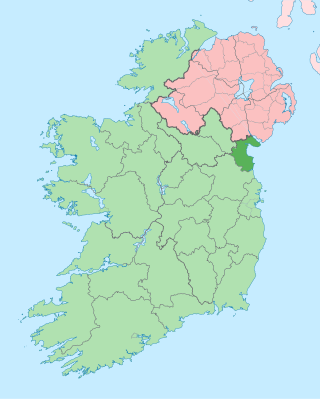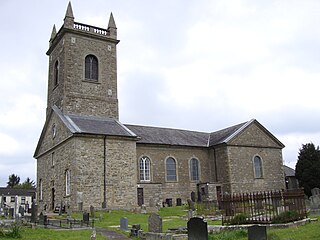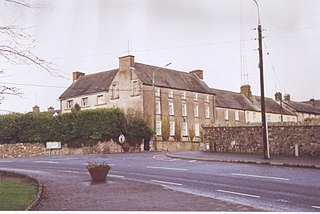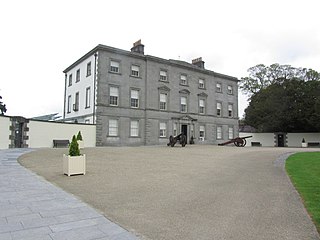Related Research Articles

County Louth is a coastal county in the Eastern and Midland Region of Ireland, within the province of Leinster. Louth is bordered by the counties of Meath to the south, Monaghan to the west, Armagh to the north and Down to the north-east, across Carlingford Lough. It is the smallest county in Ireland by land area and the 17th most populous, with just over 139,100 residents as of 2022. The county is named after the village of Louth. Louth County Council is the local authority for the county.

The Bishop of Clogher is an episcopal title which takes its name after the village of Clogher in County Tyrone, Northern Ireland. Following the Reformation, there are now parallel apostolic successions: one of the Church of Ireland and the other of the Roman Catholic Church.

Anthony Foster, of Collon, County Louth, was an Anglo-Irish politician and judge.
Sir Tristram Beresford, 3rd Baronet was an Anglo-Irish soldier, politician and baronet.
John Montgomery was an Irish MP for County Monaghan, Ireland.

Philip Tisdall SL was an Irish lawyer and politician, who held the office of Attorney-General for Ireland. He was for many years a leading figure in the Irish Government.
Thomas Tennison was an Irish politician and judge. He served as Prime Serjeant and as a judge of the Court of Common Pleas. He sat in the Irish House of Commons as member for Dunleer for many years.
Richard Tenison was an Irish bishop of Killala, Clogher and Meath.

Kilronan Castle, previously known as Castle Tenison, is a large country house standing in 40 acres (16 ha) of parkland on the shore of Lough Meelagh in County Roscommon, Republic of Ireland, 2 kilometres (1.2 mi) from the village of Ballyfarnon.

John Sterne (1660–1745) was an Irish Church of Ireland clergyman, bishop of Dromore from 1713 and then bishop of Clogher from 1717.

Sir Thomas Pakenham (1649-1703) was an Irish barrister and politician: he sat in the Irish House of Commons as MP for Augher and held the office of Serjeant-at-law (Ireland). He was the grandfather of the first Baron Longford.
Thomas Bladen (1615-1695) was an Anglo-Irish priest in the seventeenth century. The eldest son and heir of William Bladen of Newton Solney in South Derbyshire and Mary Young, his family left London in 1626 where they had a printing/bookselling business at St Paul's Churchyard to live amongst Protestant settlers in Dublin.
Ralph Lambert (1667–1731) was an Irish Anglican priest in the first half of the 18th century.
Thomas Burgh was an Anglo-Irish politician who was elected MP for Lanesborough in the Irish House of Commons (1727–1758).
Rt. Hon. Henry Blayney, 2nd Baron Blayney, Baron of Monaghan was the son of Edward Blayney, 1st Baron, and of Ann Loftus his wife, daughter of Adam Loftus, Archbishop of Dublin and sometime Lord Chancellor of Ireland, by his wife Jane Purdon.
Dillon Ashe, D.D. (1666-1724) was an Anglican Archdeacon in Ireland in the first half of the eighteenth century.
Richard Tenison (1684–1725) was an Irish M.P.
Sir Maurice Eustace was an Anglo-Irish politician.
Hercules Langford Rowley PC was an Irish politician and landowner.

Dixie Coddington was an Irish MP and army officer.
References
- ↑ 'The Barton Estate and Lough Bawn in County Monaghan' Schlegel, D.M. Clogher Record Vol. 15, No. 2 (1995), pp. 104-145 Published by: Clogher Historical Society DOI: 10.2307/27699393 https://www.jstor.org/stable/27699393
- ↑ "Fasti Ecclesiae Hibernicae: The succession of the prelates Volume 3" Cotton, H. pp120/21 Dublin, Hodges & Smith, 1848–1878
- ↑ Leigh Rayment's historical List of Members of the Irish House of Commons . Cites: Johnston-Liik, Edith Mary (2002). The History of the Irish Parliament 1692-1800 (6 volumes). Ulster Historical Foundation.